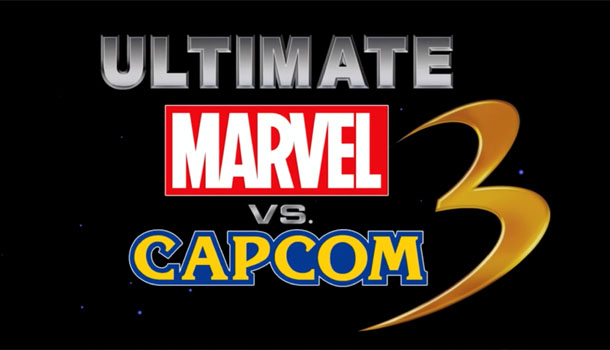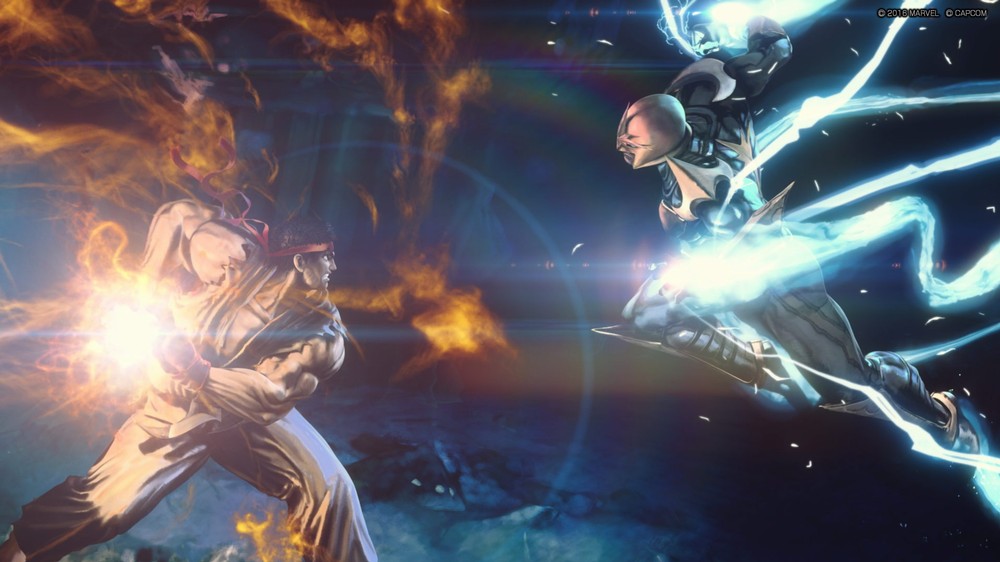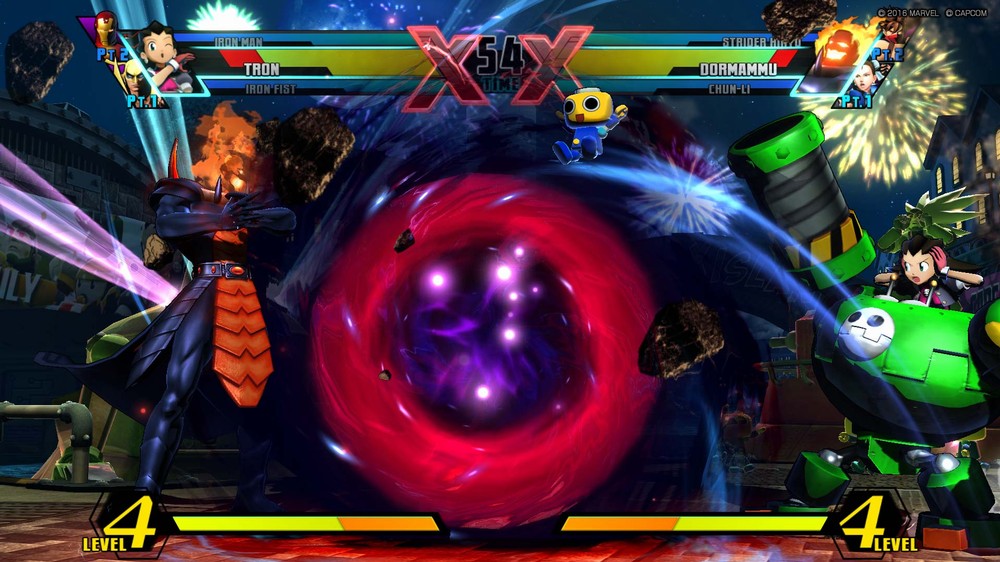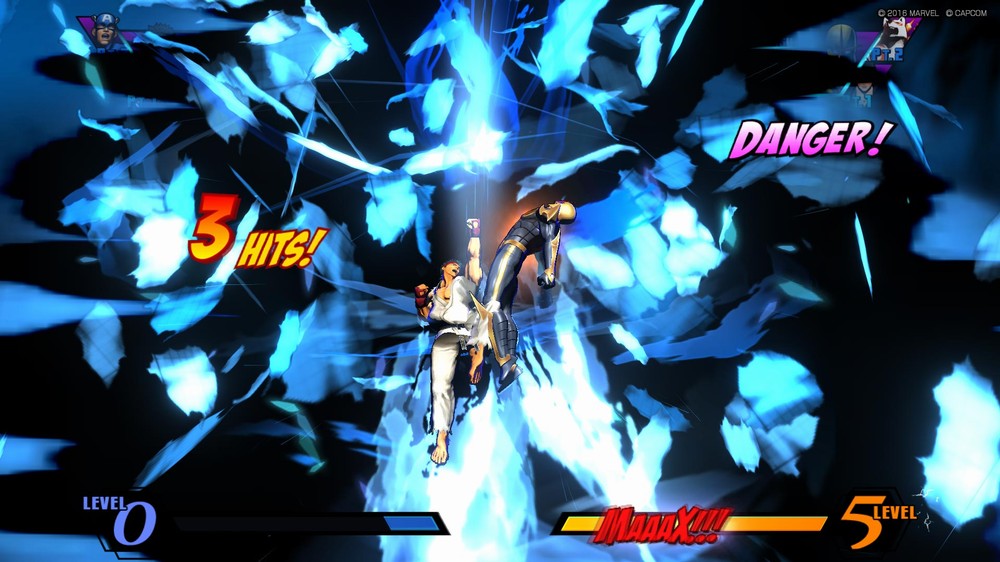It is hard to believe that nearly six years has gone by since Capcom released their now-classic 2D brawler, Marvel vs. Capcom 3: Fate of Two Worlds. Originally released in February of 2011, the Capcom development studio was rocked by the catastrophic April 2011 Tōhoku earthquake and tsunami, and missed their planned DLC ship dates. As a result, in November of 2011, Capcom compiled all the DLC into a standalone release, renamed it Ultimate Marvel vs. Capcom 3 and released it to coincide with the Japanese launch of the PlayStation Vita.
Then, there was nothing. Nothing new at least. There was a 2012 release Marvel vs. Capcom Origins, but that was little more than a re-hash of their earliest 1990’s titles squeezed out just prior to Disney pulling Capcom’s Marvel license to allow them to develop the own Disney Infinity versions of the Marvel characters. But really, nothing “new” for five years.
It’s not that long stretches of time between releases are all that uncommon with the series – there was more than ten years between Marvel vs. Capcom numbers 2 and 3. And while I’m sure Capcom would love to crank out yearly incremental updates, given its massive cast of characters, the Marvel vs. Capcom franchise forever finds itself falling into and out of licensing hell which locks it up for long periods of time. This time it was Disney, from 2000-2010 it was – well – “complicated” as one staffer put it. Regardless, when you have an ensemble cast of licensed characters going into a game, a lot of red tape needs to be navigated.
That being said, the most recent 5-year licensing delay has finally come to an end, and Capcom is preparing for the upcoming release of the newest installment in the franchise, Marvel vs. Capcom: Infinite, scheduled for late-2017. In the meantime, they have decided to drum up some excitement with a re-release of Ultimate Marvel vs. Capcom 3 on the current generation of consoles.
Thankfully, 2D fighting games age well, because Ultimate Marvel vs. Capcom 3 is just a relevant and enjoyable today as it was in 2011. Experts might cringe, but Capcom’s continued inclusion of the “Simple Mode” control scheme – that consolidates the overly complex controls to just a few basic button combos – eases newcomers to learn the ins and outs of the frenetic gameplay, allowing for a much more enjoyable experience.
Ultimate Marvel vs. Capcom 3 returns with the same cast of 36 original characters and 12 DLC characters of the original, ranging from series stalwarts Ryu and Chun Li, to some very bizarre entrants like Guardians of the Galaxy’s Rocket Raccoon and Capcom’s own Ace Attorney, Phoenix Wright. As always, all of the characters are meticulously balanced and kick ass in their own way. There are no ringers in the cast, and even heavily armed characters can square up against close combat brawlers and the fighting is fair and rewarding.
Gamers choose one main and two support fighters to square up against an opposing trio of brawlers. As the one-on-one battle becomes heated, main characters can summon support characters to pop in and deliver quick, decisive punishment, or exchange positions completely with the main character to augment weaknesses and/or maintain health. Each round affords the gamer one “X-Factor” summons to temporarily increase health and speed that gets doled out equally to the gamer’s trio of characters – what this means is that a gamer with three characters left will have shorter and less powerful X-Factor than a player with only one character remaining. This definitely adds to the strategy of the timing, especially considering the X-Factor cancels all opposing attacks no matter their strength.
Visually, the game is astounding, with some of the best 2.5D graphics on the system. To call the look “cel” or “toon” shaded would be a disservice to the art. There is a definite comic book appearance to the proceedings, with heavy dark overtones to the deep inking, but the beautifully applied shading gives everything a definite appearance of depth and structure. The character animations are incredibly smooth, and really do a great job of capturing the 2D fighter ambiance while eschewing the sprite-based animations that typically come with the genre.
But the real visual treat comes from the fantastically over-the-top animations that come with the special moves. I venture to say that these scenes are better than anything seen in any of Marvel’s animated series – and if they were to incorporate these hyper-exciting visuals in their films and television episodes it would be absolutely incredible (hint, hint…). Seriously though, these hyper cutaways fill the entire screen with enough flashy explosions and electrifying fireballs to rival a Fourth of July fireworks show. And while a couple of the easier moves’ animations do find themselves a little played out over time, those moments when a lesser-seen move pops up is like discovering an Easter egg – even if it’s the computer performing the attack.
The Street Fighter games were never known for their sound quality – and Ultimate Marvel vs. Capcom 3 does not do much to fix the issue. Each character has his or her list of one or two word ‘kias’ corresponding to their attacks – ranging from Ryo’s trademark “Uuurrahh” to the creepy-surreal “Bang! Bang! Bang! Bang! Bang! Bang!” of the Marvel character Deadpool. It is interesting to note that many of the Marvel characters tag lines are being lipped by the actual voice actors from the Marvel cartoons, using actual taunts from the printed comics – even Hulk taunting Thor with the humorous “Goldilocks” or Iron Man with “Metal Man” comes from printed material. It definitely gives the proceedings a touch of authenticity for comic fans who might be a little turned off by the gaming crossover.
Aside from the requisite “Offline” and “Online” head-to-head modes, Ultimate Marvel vs. Capcom 3 offers four additional gameplay modes; Mission, Shadow, Heroes and Heralds, and Glactus.
Mission mode is basically a glorified training mode that lists certain requirements for each match – these requirements may range from pulling off certain move chains, or finishing within a certain time. Sadly, while this is one of the more tiresome modes, it is also the mode that has he most Achievement Points attached to it, so completists will be forced to slog through the increasingly difficult requirements.
Shadow mode is one of those quirky Japanese oddities in which gamers are allowed to play against the “styles” of prominent real-life champions. Yes, the developers study the styles of live Street Fighter champions, then programs the AI to “shadow” their gameplay. These Shadows are to be released as a series of downloadable content packs – the first of which has already been released for free – I personally did not find much of a difference between the Shadow Mode play and the standard AI, but we will have to wait for later releases to make a judgment.
Ultimate also includes the Fate of Two Worlds’ DLC Heroes and Heralds mode, which combines card-based gaming with the traditional 2D fighting mechanic. In Heroes and Heralds, gamers choose a side “Heroes” (see: good guys) or “Heralds” and then collect and trade virtual cards, all in an attempt to build a deck of three fighters to either defend, or destroy the world. It definitely amps up the complexity of the original Fate of Two Worlds gameplay, and pushes the player to go online where some of the best cards can be acquired.
Finally, Ultimate packs in the utter ridiculous Galactus mode in which gamers take on the role of the arcade mode’s final boss, Galactus. If anyone has played a Marvel vs. Capcom 3 title before, they know that Galactus is a planet-devouring behemoth that takes up roughly half of the screen and can crush an opponent with a single slam of his massive fist. In Galactus mode, gamers do little more than slam characters one-by-one into oblivion, and then finish off by demolishing the world leaving nothing behind. Galactus mode is certainly good fun for a while, but in the end its more of a novelty than anything else.
On its third outing now, Marvel vs. Capcom 3’s gameplay still holds its own. However, this straight re-release of the 2011 Ultimate version with nothing added other than arguably-upgraded visuals (full 1080p at 60fps) and a digital version of the coffee table book, “Marvel vs. Capcom: Official Complete Works” makes it a bit difficult to justify the $25 price point for return purchasers. Of course if you are a first-time buyer, especially one who missed out on the original 2011 release once Disney forced Capcom to pull the titles from PSN, you certainly cannot go wrong with Ultimate Marvel vs. Capcom 3.















